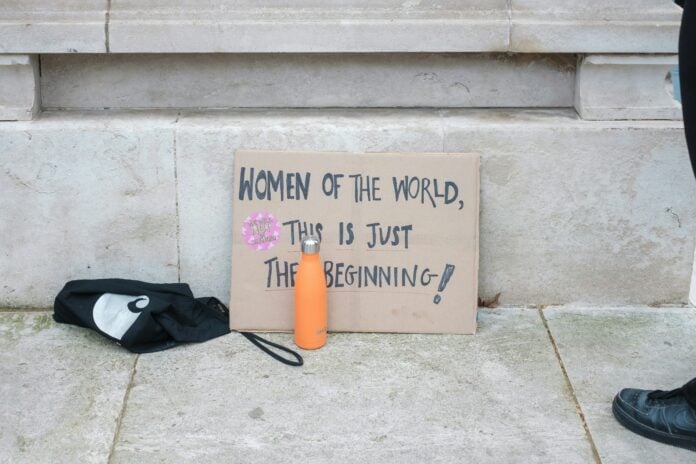To celebrate International Women’s Day, it’s the perfect time to shine a spotlight on the incredible Portuguese women who’ve made their mark on history. These women weren’t just ordinary—they were trailblazers, rebels, and all-around awesome individuals who refused to be held back by anyone or anything.
In this article, we’re diving headfirst into the lives of some of the most kick-ass Portuguese women ever. From queens to artists, scientists to activists, each one has a story that’ll make you sit up and take notice. They faced challenges, broke barriers, and left a legacy that still inspires us today.
So, get ready to raise a glass (or two) as we celebrate these extraordinary women and their unforgettable contributions to Portuguese history. It’s time to honor their achievements, cheer on their successes, and give them the recognition they truly deserve this International Women’s Day!
Teresa of Leon (1080-1130)

On the day of her wedding, she might have still been a minor; while he (Henry of Burgundy) was just over 25. She was the daughter of Alfonso VI of León and his ‘friend’ Ximena Muñiz, and the fifth granddaughter of Mumadona Dias, the first countess of Terra de Portucalis. And he – son of the Duke of Burgundy, great-grandson of the King of France, great-nephew of Hugo de Cluny – received her as a prize, along with the counties of Coimbra and Portucale.
From this union, three daughters were born, and Afonso, who became the first king of Portugal. When she became a widow, she named herself queen and continued her husband’s fight to conquer lands and expand his domains. For her, it made sense to unify the north of the Iberian Peninsula under her scepter. She ruled the county of Porto for 16 years, many of which with the Count of Trava at her side, both pursuing the idea of autonomy, even after being defeated by Afonso Henriques. She died two years later and was buried in the Cathedral of Braga next to her first husband, Count Henrique.
Teresa Henriques (1151-1218)
Gentle, manly, haughty, giving, very beautiful, slender, of good temper, one of the most beautiful women in Europe, desired by all the princes of the land… these are some of the qualifications attributed to Teresa (for the Portuguese), Matilde (for the Flemish) and Mahaut (for the French), the daughter of the first king of Portugal and Queen Mafalda of Savoy. It went back to her father and grandmother Teresa of León, the Portuguese woman who married Philip of Alsace, the count who was more powerful and wealthier than some of the kings of Europe in the 12th century.
The qualifiers seem to fit, but it’s curious to point out this kind of attribute when talking about a woman who was the co-regent of a kingdom, heir to the throne and became queen-countess, and a major obstacle to the annexation of Flanders by the French. She ruled as a widow and commanded armies, made her brother Grand Master of the Order of Hospitallers, and remarried to win another independent county, Burgundy.
Brites de Almeida (1350-?)
According to oral tradition, Brites de Almeida was a baker who lived in the Aljubarrota region during the reign of King João I. During the decisive battle between the Portuguese and Castilian forces on August 14, 1385, Brites stood out for her bravery and determination. Legend has it that while the men were fighting on the battlefield, Brites was busy baking bread in her oven. When she realized that the Portuguese soldiers were hungry and weakened, she decided to intervene in an unexpected way.
Grabbing a baker’s shovel, Brites would have attacked the Castilian invaders who were trying to sack her village. With her baker’s shovel in hand, Brites faced her enemies with courage and ferocity, helping to repel the attack and inspiring the Portuguese soldiers to resist with renewed determination. Her bravery and dedication to the Portuguese cause during the battle earned her the nickname “Baker of Aljubarrota” and the eternal admiration of the Portuguese people.
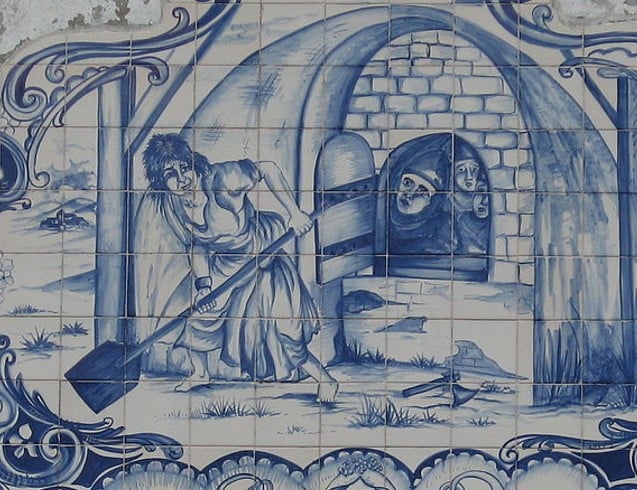
Filipa De Lencastre (1360-1415)
Granddaughter of King Edward III of England, daughter of João de Gaunt and Branca, she spent her childhood moving from land to land as her father decided to travel to better manage his wife’s estate, which was heir to the Duke of Lencastre. She came to Porto at the age of 27 to become Queen of Portugal and begin the Avis dynasty with João I. She was one of the driving forces behind the modernization of Portugal.
She would be one of the driving forces behind the modernization and expansion of the kingdom, as well as educating her children, the so-called Ínclita Geração. Feeling she was dying, she called them together and asked for three swords to give to the eldest. She asked Duarte, heir to the throne, to rule with justice and piety; Pedro, the Sevenfold, to look after the honor of women; Henrique, the Navigator, to look after men; and Isabel (future Duchess of Burgundy) to look after her younger siblings, John and Ferdinand, the Holy Infant.
Like her paternal grandmother Filipa de Hainault, her grandfather Henrique de Lencastre, and her mother, who left her an orphan at the age of nine, died of the plague. “What enigma was there in your womb that only geniuses could conceive?” wondered the poet Fernando Pessoa.
Antónia Rodrigues (1580-?)
She was born Antónia and became António to travel to North Africa. In less than 20 years, she was a girl, a boy, a grub, a rifleman on foot and on horseback, a hero, a woman, a heroine, a wife, and a mother. She was born in Aveiro, but she must have been 12 when she fled Lisbon, from her sister’s house, already with a strategy: with a few pennies she had saved, she bought a sailor’s suit and cut her hair so as to erase any feminine traits.
He then ran to the pier, where he persuaded the master of a caravel to take a helper with him. He arrived as a grumete in the Portuguese square of Mazagão, where he enlisted as a soldier. By the age of 15 or 16, he was already being called the ‘Terror of the Moors’. When a soldier’s daughter fell in love with her character, Antónia revealed her body and returned to Portugal. Here, they called her ‘Portuguese Knight’ and awarded her an annual tença for having served bravely in the kingdom’s army.
Josefa D’Óbidos (1630-1684)
The daughter of an Obidan father and an Andalusian mother, she was born in Seville at a time when the same Philip reigned in Spain and Portugal. She traveled from Seville to Óbidos when she was still a child, and from there she never went further than Alcobaça, Coimbra or Buçaco. They say she died emancipated but a maiden, ill but lucid. Throughout her life, apart from a few business ventures for which she showed wisdom, she did nothing but paint canvases and boards, engrave copper, and perhaps model clay, passionately, full of faith.
Her first known works are the engravings of Saint Catherine and Saint Joseph, done with a burin at the age of 16 when it seemed she was going to be a nun. But Josefa d’Ayala e Cabrera, the daughter of an artist, decided to follow in her father’s footsteps, combining his teachings with the spontaneity of someone who practices art without feeling influenced. At a time when it was not easy to be a woman, she did what she wanted and made history with her Baroque art.
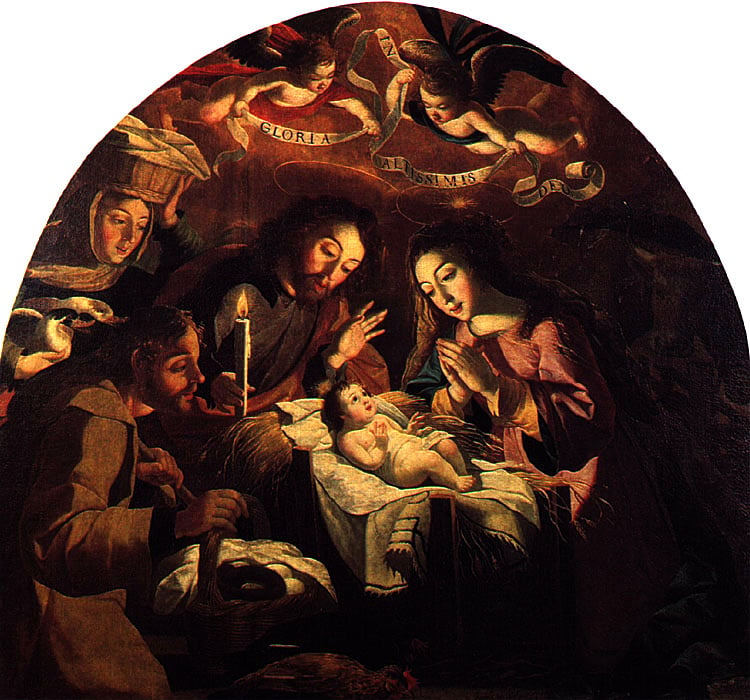
Juliana Dias da Costa (1657-1734)
The 38th Viceroy of India was quite worried for a few months in 1712 – the “Mogor power” had conquered all of Hindustan up to the border of John V’s domains in Asia. But perhaps he had no reason to be. The Mongol king was considered a friend and whoever was in charge of Bahadur Shah’s harem had a Portuguese name and spoke Portuguese, as well as Persian, Latin, French, and others.
Nurtured by five Mongol monarchs, whose advice she listened to, whether in the field of medicine or diplomacy, Juliana, as well as being the superior and clinician of the imperial serralho, successfully acted as procurator for the Portuguese kingdom and served as an intermediary for the Dutch, French, and Italians, also providing expansion for the Jesuits. The daughter of a Portuguese man and the slave of an Agra princess, she was born in Bengal, where, in the 17th and 18th centuries, the Portuguese language was used by everyone to understand each other.
Antónia Pusich (1805-1883)
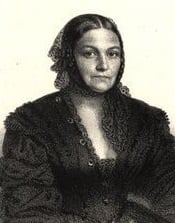
She was about 15 or 16 when she experienced her first trial by fire. She snuck out of the house to take part in a battle, ready to die. She wanted to be close to her father, to run the same risks as the governor of Cape Verde, where she was born. She would defy fear again in other circumstances, such as when she tried to save one of her husbands from death.
Married two or three times, depending on whether her life is told in the 19th century or the next, mother of five, writer, Antónia Gertrudes Pusich was the first woman to found and run a newspaper, without pseudonyms – for this reason, some argue that she was the first Portuguese journalist. Monarchist, writer, composer, and defender of women’s right to education, she said she wasn’t political but rational, but she fought political arguments until she died in Lisbon at the age of 78.
Antónia Ferreira (1811-1897)
She was born in Godim, near Peso da Régua, where she spent her childhood and adolescence. She married for family convenience to a cousin, a bohemian and womanizer, who left her a widow at just over 30 with two children, but heir to a fortune. Alone, she negotiates, controls, invests, helps the needy, takes care of her children, sues her children… and dies an octogenarian, much richer than she was born, with farms producing 1500 barrels of wine a year. She leaves a fortune valued at 5,907,323$000 réis, which includes 30 estates, well-stocked warehouses and palaces, art collections, jewelry, bonds, loans, and cash.
His demanding will – a division between his two sons and 18 grandchildren – was carried out without reservation. Her last major initiative was in 1887, when, against general opinion, she had vineyards planted at Monte Meão, a high point in the wilderness from where the famous “Barca Velha” would be produced. Many called her ‘saint’ and ‘mother of the poor’, but the name that will remain in our memories is the popular ‘Ferreirinha’.

Queen Maria II (1819-1853)
They call her the Educator… In fact, she committed herself to raising her children, when it was customary to leave this task to someone else. Maria da Glória Joana Carlota Leopoldina da Cruz Francisca Xavier de Paula Isidora Micaela Gabriela Rafaela Gonzaga, born in Rio de Janeiro, was aware that she was living in very different times to her ancestors. In hers, those who govern must be illustrious and educated, as she had heard her father, Pedro IV, the first emperor of Brazil, say.
And she made a great effort to cultivate herself, learning above all from her third husband, Ferdinand of Saxe-Coburg-Gota-Koháry. But to reduce her to this role of ‘good mother’, as was the case until the 20th century, is unfair to a woman who was queen at the age of 7 and effectively reigned from the age of 15, during a period of great turmoil in the kingdom of Portugal, with fighting between brothers, civil war and popular uprisings. The woman who succeeded in enforcing the Constitutional Charter died at the age of 34.
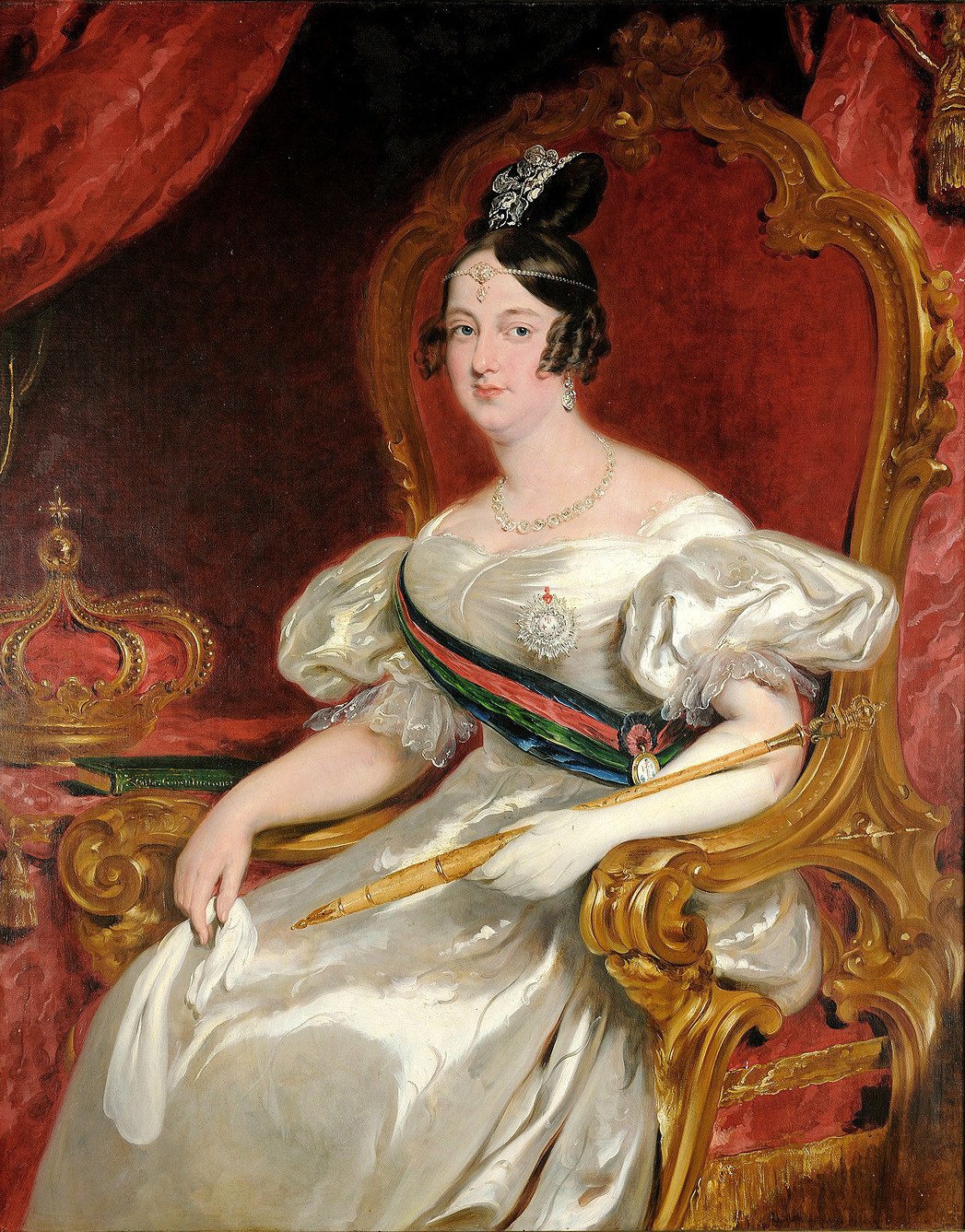
Luísa Holstein (1841-1909)
She was the heiress to one of the richest families in the kingdom and would not give up the management of her estate to her husband, as was the custom. She is the only female sculptor to stand out in the 19th century in Portugal. An award-winning artist at the Paris Salon, where she exhibited at the age of 43 with a 20-year-old daughter, she had many interests beyond art.
She called herself a socialist, saying that the superfluous of the rich was the patrimony of the poor, and an example of this attitude in her life is the canteen for those whose salaries were barely enough to support themselves, but who should have the right to eat a good meal in a decent, clean place. The Economic Kitchens, a work that the establishment of the Republic did not disregard, represent the most visible part of the philanthropy of Maria Luísa Domingas de Sales de Borja de Assis de Paula de Sousa Holstein (from Palmela). She was the Duchess, as they called her in Lisbon.
Adelaide Cabete (1867-1935)
She survived as a girl, working days, learning by ear, until she fell in love with a man 18 years older, modern, ready to make her his equal. Born in Elvas, the daughter of laborers, Adelaide de Jesus Damas Brazão married at 18, finished elementary school at 22, finished high school at 29 and graduated in Medicine at 33.
“The protection of poor pregnant women as a means of promoting the physical development of new generations”, was her degree thesis, in which, going beyond the boundaries of science, she proposed the creation of a law that would allow workers to rest in the last month of pregnancy, benefiting from a subsidy taken from the company’s profits, from the State and from a levy among the workers.
She proposed the creation of maternity wards, crèches, children’s homes, social solidarity institutions… a foretaste of the issues she would defend until the end of her life. Republican, feminist, Freemason, she fought for the rights of women, children, the poor, animals… she fought for an equitable and healthy society.

Irene Lisboa (1892-1958)
Her name can be seen on plaques in schools, libraries, avenues, streets, squares, and squares, but few people know her work. Most of the books she wrote were published at her own expense and those published by her publisher sold very little. “Everything belongs to others/and I was always denied,” wrote the innovative pedagogue, born near Arruda dos Vinhos, forced into retirement by the dictatorship when she was just 46.
A writer of prose and poetry, whom time will impose as the forerunner of modern writing in Portugal, Irene do Céu Vieira Lisboa had been awarded a scholarship in Switzerland and there she learned how to end the monotony and repression at school by getting her pupils to learn through play. Unable to teach, she suffered in silence, writing, and seeing her newspaper articles censored by the same people who banned her from giving lectures. But she won’t give up. She will be the only woman among 34 men at the 20th-anniversary dinner of the democratic opposition magazine “Seara Nova”, in which she collaborates under a man’s name. Thirty-one years after her death, she was awarded the Order of Liberty.
Maria Lamas (1893-1983)
Baptized with the name Maria da Conceição, she was born in Torres Novas into a middle-class family, the first of the four children of Manuel Caetano da Silva and Maria da Encarnação Vassalo. She thought she was going to be a nun, but her father and marriage soon erased her mystical side. She was a journalist, writer, feminist, and fighter… She paid the price with prison and exile for defending her ideals.
And she didn’t want to be forgotten: on several occasions she told her youngest daughter not to tear up her letters because it was important to know what she was thinking. At the age of 81, he joined the Portuguese Communist Party out of a sense of consistency. She is a symbol of the struggle for the emancipation of women and for democracy. It is impossible to forget her role.

Florbela Espanca (1894-1930)
Pulmonary embolism was what remained on her death certificate. A half-truth in death as well as in birth: the certificate stated “daughter of father incognito”. Well, the poet chose to commit suicide and everyone knew that her father was João Maria Espanca. A father who educated her, who helped her, but who would only officially recognize her 19 years after her suicide, in order to benefit from the copyright of his daughter’s great poetic work and because a few days later a bust of the poet would be inaugurated in the city of Évora, where she lived and where she had also resided.
Flor Bela Lobo, as she was known, was born in Vila Viçosa under the sign of Sagittarius. She was a bold woman who occasionally lacked the courage to go against prejudice. She died with the feeling she always had, that no one had ever liked her. Her, who had written “I want to love, to love, hopelessly”…
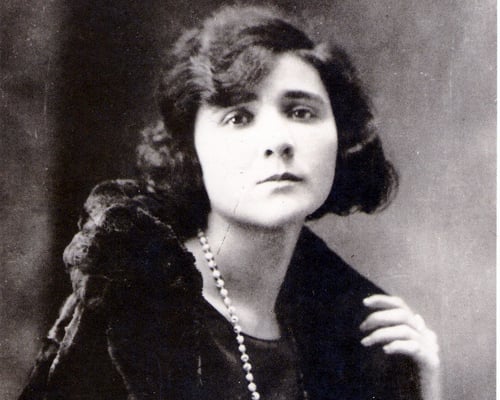
Edmée Marques (1899-1986)
“I hereby certify that Branca Edmée Marques has done very useful work in my laboratory since the beginning of November 1931,” began Marie Curie’s letter, which did not persuade the Portuguese government to extend the scientist’s scholarship. Those who took up her work made important discoveries, but the Lisbon woman was forced to return to Portugal, where women and science were worth little, even though we were already in the 20th century.
Despite having a doctorate since the age of 36, becoming director of the Radiochemistry study center at the Institute of High Culture, Curie’s insistence that she return to Paris, and her excellent marks in university career advancement competitions, she would only become a full professor in 1966, when she was 67 years old and had already contributed greatly to the country’s scientific research, especially with regard to the use of nuclear energy for peaceful purposes.
Lúcia dos Santos (1907-2005)
One of the three children who claimed to have witnessed the apparitions of Our Lady of Fatima in 1917, she is another notable figure in Portugal’s history. Born Lúcia de Jesus Rosa dos Santos in Aljustrel, a small village near Fátima, in 1907, she became a central figure in the phenomenon of the apparitions that transformed the city of Fátima into an important Catholic pilgrimage site. Together with her cousins Francisco and Jacinta Marto, Lucia claimed to have witnessed several apparitions of the Virgin Mary between May and October 1917.
The apparitions, which included messages of peace, repentance and prayer, attracted the attention of thousands of pilgrims and had a lasting impact on religious devotion in Portugal and around the world. After the apparitions, Lucia became a Carmelite nun and dedicated her life to prayer, penance, and spreading the message of Fatima. She wrote several books about her experiences and took part in countless pilgrimages and religious events related to the apparitions. Her deep devotion and faith made her a revered figure not only among Catholics but also among people of different faiths around the world.
Vieira Da Silva (1908-1992)
In 1956, Elle magazine voted her Frenchwoman of the Year. She had been living in France for some time but did not accept the distinction, pointing out that she was Portuguese, born in Lisbon. But that same year, she opted for the nationality of the country that had welcomed her.
She did so after Oliveira Salazar offered her what he had refused her almost two decades earlier, when she and her husband wanted to become Portuguese citizens and the dictator blackmailed her, making her acceptance conditional on divorce. Maria Helena Vieira da Silva had lost her citizenship when she got married on her 22nd birthday to the painter Arpad Szenes, a stateless Jew born in Hungary, the love of her life… It wasn’t until the 1970s that Portugal recognized that her talent for painting had made history.
Cesina Bermudes (1908-2001)
If she could choose her next reincarnation, she would choose a life that offered her a musical education. She believed that there were several passages on Earth to perfect the spirit and, this time, she had only dedicated herself to scientific research… she had only graduated in Medicine, specialized in Obstetrics, obtained her doctorate with 19 marks, introduced painless childbirth in Portugal, defended women’s rights, joined the Communist Party to fight Salazarism, helped to give birth to countless babies of mothers persecuted by the dictatorship that will also imprison her… In this life, which was not at all fruitful from a musical point of view, she was still interested in literature and sport. But for her, medicine was everything.
Sophia de Mello Breyner Andresen (1919-2004)
Her poetry, marked by lyrical language and deep reflection on human nature and the world around her, won her critical recognition and the affection of the public. Sophia explored themes such as freedom, justice, national identity and the female experience in her works, giving voice to a unique and profoundly humanist perspective.
In addition to her writing career, Sophia was also an active figure in Portuguese public life, getting involved in political and social issues. She was a prominent voice in opposition to the Salazar regime and a defender of human rights and freedom of expression. Sophia de Mello Breyner Andresen left a significant legacy not only as a poet, but also as a voice of conscience and resistance in times of adversity. Her poetry continues to inspire and move readers around the world, reflecting the beauty and complexity of human experience and the transformative power of art.

Amália Rodrigues (1920-1999)
Singer, fado singer, theater and film actress… a ‘star’ of the 20th century. Her life has been written and rewritten. But there’s always something to tell about this woman who could have been called Maria do Carmo… about this woman who chose the day to celebrate her birthday… about this intuitive woman who didn’t feel she was a fado singer, but an artist… who said she owed her success to sadness, fear, and shyness… who said she sang by singing. … who said she had earned the right to be just Amália and not Dona Amália, as her admirers called her because they thought this showed more respect for the woman who took fado to the world and, over the course of half a century, recorded more than a hundred and a half records, appeared in a dozen films and gave countless shows. And she didn’t do more because she didn’t want to.

Natália Correia (1923-1993)
An Azorean from São Miguel, she left the island at the age of 11 and went to Lisbon to study, but did little at school. She made of life what few of her contemporaries could boast, becoming one of the great figures of the 20th century. Novelist, poet, bohemian, playwright, essayist, MP, antique store owner, bar owner… Natália de Oliveira Correia, with her scarves, long mouthpieces and great oratorical talent, stood out for her intelligence and her work.
Married four times, she never had children and said that her motherhood was universal. As a girl, she wanted to be a poet, a detective and the owner of a clandestine casino. “I look enthusiastic, exuberant, but it’s only on the outside. It’s my way of freeing myself from the tensions that people bite down on inside. On the inside, I have the immobility of an oriental idol. But I’m not cold. I’m even deeply affectionate,” she said.
Maria de Lourdes Pintasilgo (1930-2004)
“Prime Minister”, “Primess Minister” or “Prime Ministeress”? People didn’t know what to call her. No woman had ever held this position in Portugal, but she was invited to do so by the President of the Republic, who was facing a political crisis. She agreed to lead a government of men for 149 days. It may have been a short time, but it laid the foundations for a social security system for everyone, whether they worked or not. Maria de Lourdes – Pintasilgo, a surname inherited from an ancestor who was nicknamed for whistling like that bird – was a pioneer who dedicated her life to fighting for a fairer society, influenced by Christian ideals and the experience of the working priests in France.
Rosa Mota (1958-)
One of the most prominent Portuguese athletes in history, standing out mainly as a long-distance runner. Born in Porto in 1958, she rose to international prominence when she won the Chicago Marathon in 1982, becoming the first Portuguese woman to win a major marathon. The highlight of her career came in 1988, at the Seoul Olympic Games, where Rosa won the gold medal in the marathon, becoming the first Portuguese athlete to win Olympic gold in athletics. Her exceptional performance made her a true national hero and a symbol of pride for Portugal.
In addition to the Olympics, Rosa accumulated titles and records in competitions such as the European Athletics Championships and the Boston Marathon. Even after ending her competitive career, she continued to inspire young athletes in Portugal and support the development of athletics in the country.
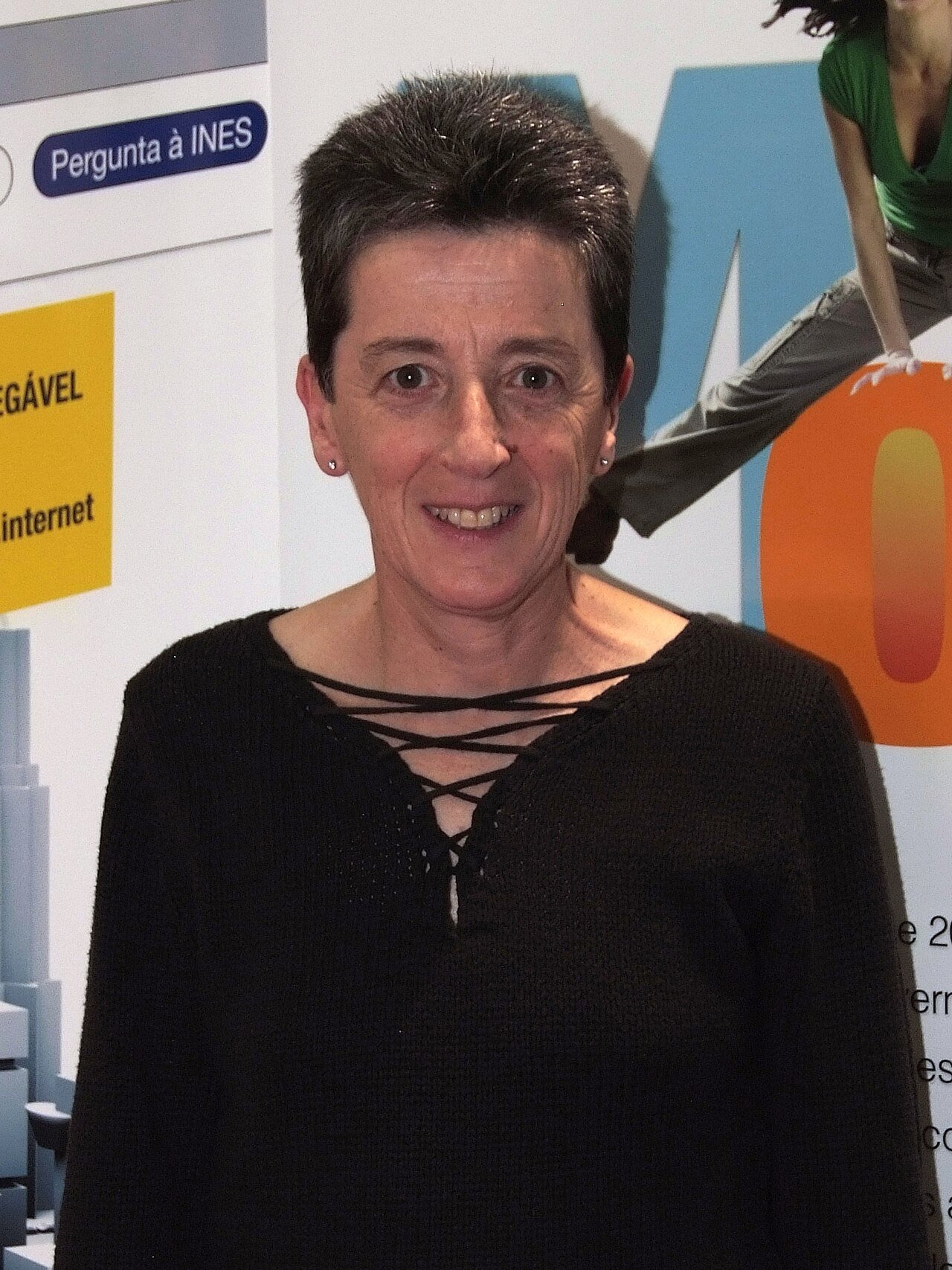
Over and Out
So, let’s wrap things up, shall we? These incredible women who’ve helped shape Portugal’s history? Yeah, they’re the real MVPs! From queens ruling the roost to artists painting the town red, and from scientists breaking through glass ceilings to activists stirring up change, these ladies have left their mark like nobody’s business.
I mean, seriously, just think about it. We’ve got queens and princesses like Filipa de Lencastre and Maria II who were running the show back when women calling the shots was practically unheard of. Then there’s Amália Rodrigues, whose voice could melt hearts and inspire movements. And don’t even get me started on Cesina Bermudes or Edmée Marques – these science whizzes were making waves in labs while most of us were still figuring out how to make a decent cup of coffee!
But you know what’s really cool? It’s not just about what these women did back in the day; it’s about the trail they blazed for all of us today. Their stories remind us that no dream is too big, no challenge too tough, and no glass ceiling too thick to shatter. They’re like the OG squad goals, showing us what’s possible when you refuse to take no for an answer.
So, as we celebrate these badass women on International Women’s Day and every day, let’s raise a glass (or a cup of coffee, if that’s more your style) to their legacy. Here’s to breaking barriers, smashing stereotypes, and making the world a more inclusive and kickass place for everyone. Cheers to the women who rocked, rock, and will keep on rocking our world!

